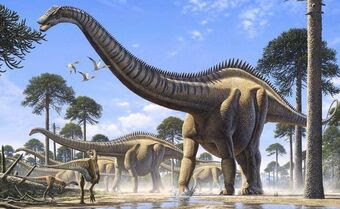Type Species: Supersaurus vivianae
Classification: Dinosauria – Saurischia – Sauropoda – Gravisauria - Eusauropoda - Neosauropoda - Diplodocoidea – Flagellicaudata – Diplodocidae – Diplodocinae
Time Period: Late Jurassic
Location: United States
Diet: Herbivore
Supersaurus was a Late Jurassic diplodocid of the Morrison Formation. Though remains have been discovered from several individuals, these remains have been scanty, and so little is known about Supersaurus apart from its length and weight. From this scientists have deduced that it was the largest sauropod of the Morrison Formation, reaching up to 112 feet in length and weighing up to forty tons. We can assume that it behaved like other diplodocids, traveling in herds across the floodplains and savannahs of Late Jurassic western North America and feeding nonstop in order to provide enough energy for its massive size. It would’ve had few predators, as it would’ve dwarfed even Allosaurus and Torvosaurus, but Supersaurus would’ve been vulnerable in its early growth stages. Given its sheer size, it may be that Supersaurus herds were greedily eyed and followed by roving theropods looking to pick off the aged or weak. A Supersaurus carcass could’ve fed dozens of large theropods.


No comments:
Post a Comment